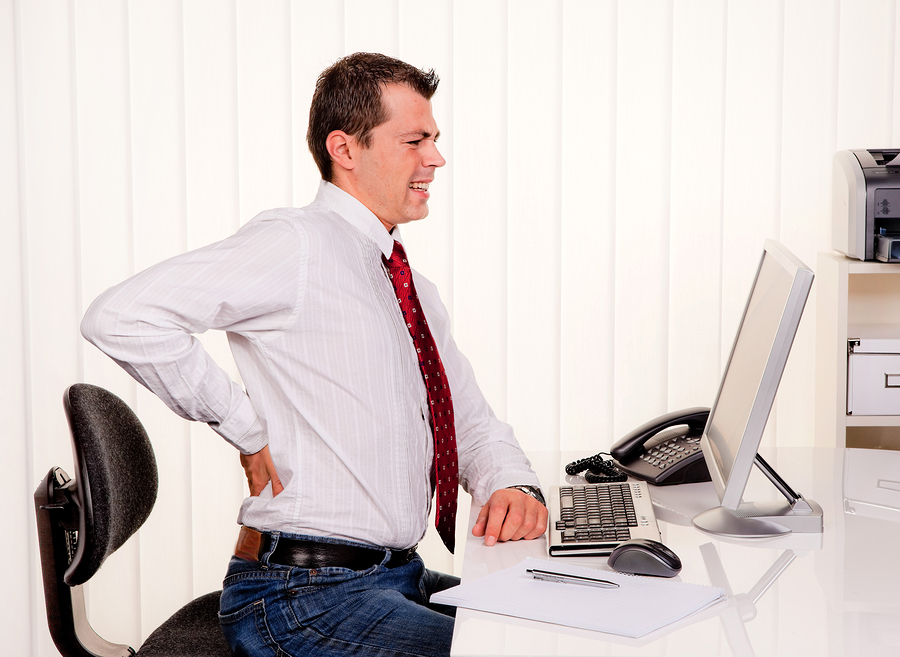Oh my aching back! Most of us will say this several times over the course of our lifetime. Sometimes it’s a chronic issue, a deep nagging ache that impacts daily activities. Other times, it’s sudden and acute and amazingly painful, the result of a “wrong move” from lifting a small child, unloading groceries, or working around the yard. Back pain affects up to 80% of Americans annually and is the leading cause of disability worldwide.
Back muscles attach to the spine, neck, shoulders, ribs and hips, which means that nearly every movement requires use of the very muscles designed to support and protect the spine. When we experience pain, it’s typically from a combination of factors: structural, lifestyle, work, stress, and previous or repetitive injuries. Behaviors that contribute to back pain include:
- Sitting for too long
- Improper form while lifting objects or reaching overhead
- Failure to stretch and strengthen back muscles through exercise
- Poor eating habits resulting in a lack of nutrients that nourish muscles and bones
A holistic approach to back care addresses nutrition, exercise, supporting the body’s ability to minimize inflammation, and habits that reduce stress and tension. It’s important to find the cause of the pain. A physician may refer you for muscle testing, imaging of muscles and bones, as well as for physical therapy.
Get the Exercise High. Keep fit and trim with consistent aerobic exercise and strength training. Exercise releases endorphins, brain hormones that reduce pain (as long as you don’t over exert). It also helps maintain healthy body weight, reducing stress on joints and muscles, particularly the back and hips. Warm up at the start, and cool down at the end of your workout to prevent injury.
Reduce Inflammation. A diet of whole foods, preferably organic, gives your body most of what it needs to fend off inflammation. Be sure to reduce exposure to environmental toxins, manage stress, and supplement with essential minerals. A turmeric supplement helps quell disease-causing inflammation; ask your doctor if it’s right for you.
Try Acupuncture A visit with an acupuncturist can set you on a course for whole body wellness. Acupuncture involves stimulating points by applying slim needles to the surface of the body along channels of flow. Stimulating these points adjusts the circulation in the meridians and re-balances the intersecting fields of resonance. During the visit, an acupuncturist will assess your lifestyle habits, energy level, emotional state and medical history and develop a plan for treatment that will encourage your body to recover from injury, heal from disease and let go of chronic pain patterns.
Meet the Acupuncturists at Heart of Wellness!
Try Myofascial Release. Myofascial release is the application of gentle sustained pressure into the Myofascial connective tissue restrictions to eliminate pain and restore motion. A series of treatments with one of our practitioners can really make a significant and lasting difference in your healing or recovery and in your health and well-being in general.
Learn more about Massage & Myofascial Release at Heart of Wellness.
Stretch out Tension. Yoga has mind-body benefits for everyone. It’s a great way to keep the back strong and limber. It can help reduce pain, minimize stress, and improve functional movement of the whole body.
Consider Trace Minerals. Several minerals are key for healthy bones and muscles; these can be deficient in the soil where food is grown, leading to deficiencies in your diet. Magnesium, potassium and zinc are trace minerals that work in concert with one another. Ask your doctor about them.
Quit Smoking. Research shows a significant correlation between smoking and back pain. Holistic physicians can utilize acupuncture to help with smoking cessation, which can reduce back pain.
There are many other natural remedies for preventing and treating back pain, such as water therapy, massage, guided imagery, social support, and of course, a diet rich with leafy greens and assorted fruits. Don’t wait for back pain to happen to you. Make an appointment today for a back care lifestyle check-up.
Ready to reduce inflammation in your body? Call Heart of Wellness at 360-570-0401 to schedule with a practitioner today.
References
- National Institutes of Medicine “Prevention and Exercises for Your Back” Reference Summary: https://2ndinnings.files.wordpress.com/2011/12/backpain.pdf
- American Chiropractic Association. Accessed 7 Feb 2016: “Back Pain Facts and Statistics” https://www.acatoday.org/Patients/Health-Wellness-Information/Back-Pain-Facts-and-Statistics , “Joint Injury Prevention: Use It or Lose It” https://oldsite.acatoday.org/JacaDisplay1.cfm?CID=5264&DisType=Text
- Green, Bart N et al. “Association Between Smoking and Back Pain in a Cross-Section of Adult Americans.” Ed. Alexander Muacevic and John R Adler. Cureus 8.9 (2016): e806. PMC. Web. 21 Feb. 2017. https://www.ncbi.nlm.nih.gov/pmc/articles/PMC5081254/
- U.S. Institute for Health Metrics: Global Burden of Disease, various articles on back pain statistics can be found at: http://www.healthdata.org/search?search_terms=back+pain
- Hoy D, March L, Brooks P, Blyth F, et al,. “The global burden of low back pain: estimates from the Global Burden of Disease 2010 Study.” Annals of the Rheumatic Diseases. 2014 Mar 24. http://ard.bmj.com/content/73/6/968
- NaturalNews.com “Top Remedies for treating chronic pain naturally.” http://www.naturalnews.com/039092_chronic_pain_treatment_remedies.html
- Katzmarxyk, P. Lee, I. “Sedentary behaviour and life expectancy in the USA: a cause-deleted life table analysis” BMJ (2012) 2:4 Accessed 7 Feb 2017: http://bmjopen.bmj.com/content/2/4/e000828

